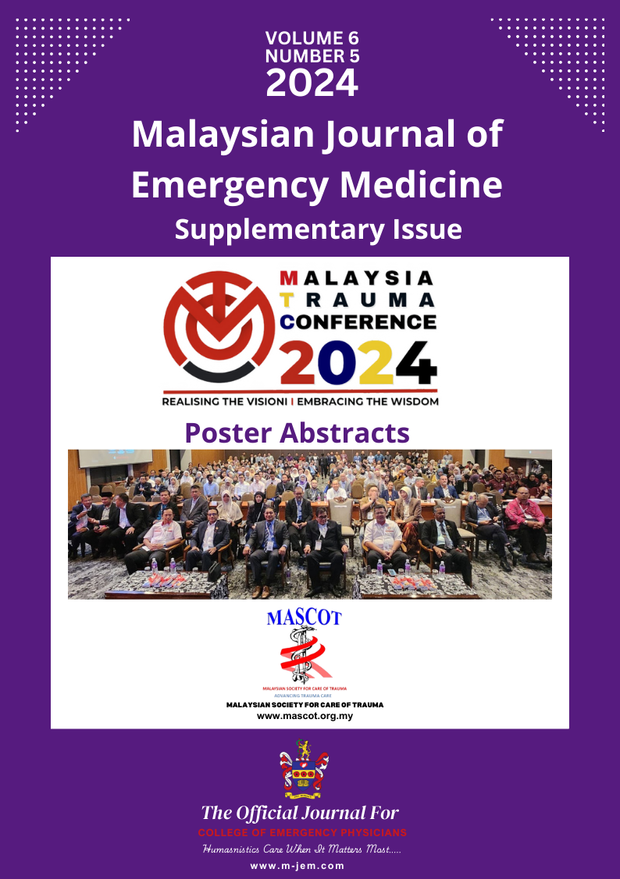A10 Unveiling Hidden Clues: Isolated Pelvic Fluid As A Predictor Of Splenic Injuries In Trauma
Main Article Content
Abstract
INTRODUCTION
Intra-abdominal injuries are a significant cause of morbidity and mortality among trauma patients worldwide, often difficult to diagnose solely through physical examination1. This report explores a possible correlation between isolated pelvic free fluid detected by E-FAST (Extended Focused Assessment with Sonography for Trauma) and splenic injuries in trauma patients.
CASE REPORT
Two cases from motor vehicle accidents highlight this correlation. The first case involves a 32-year-old female pillion rider who, after sustaining multiple injuries and exhibiting lower abdominal tenderness, showed free fluid in the Pouch of Douglas via E-FAST. CT scan confirmed a grade 3 splenic injury. She was resuscitated with two pints of packed cells, managed conservatively, and remained stable. The second case describes a 34-year-old male with loss of consciousness and retrograde amnesia following an accident. Presenting with fluctuating Glasgow Coma Scale (GCS) scores and multiple limb injuries, he also reported non-specific abdominal tenderness and haematuria. E-FAST detected free fluid in the rectovesical pouch. CT scan revealed a grade 2 splenic injury, a left perirenal hematoma, and a left temporal extradural haemorrhage. He received one pint of packed cells during resuscitation and remained stable. Both patients were discharged well after a period of observation.
DISCUSSION
E-FAST is known for its high sensitivity and specificity in detecting intraabdominal free fluid, though it may not always accurately identify the source. While splenic injuries typically present with peritoneal free fluid localized to the splenic region, evidence linking isolated pelvic free fluid to splenic trauma is limited2. In these cases, sonography identified isolated pelvic free fluid in patients with non-specific abdominal pain, during which the pelvis was not the most dependent area. CT scans confirmed splenic injuries, suggesting a hypothetical association. Recognizing this novel correlation can prompt further diagnostic evaluation and direct clinical management particularly in cases where signs of injury are subtle or absent.
CONCLUSION
Isolated pelvic free fluid in trauma patients may be a significant indicator for splenic injury. Further research with larger patient cohorts is necessary to validate this potential correlation.
Metrics
Article Details

This work is licensed under a Creative Commons Attribution-NonCommercial 4.0 International License.

